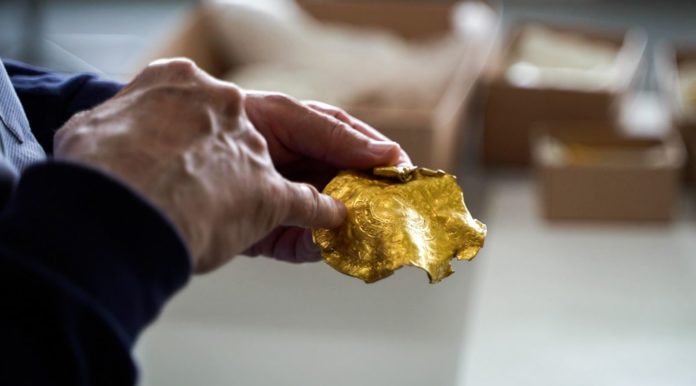A huge gold treasure from the early Germanic Age, which weighs almost a kilo and stored on gold medallions the size of saucers, is thought to have been a sacrificial present to the gods in order to prevent what is today viewed as a catastrophic disaster.
A huge gold treasure of almost 1 kilogram consisting of medallions the size of small saucers and Roman coins made into jewelry, has now seen the light of day.
Amateur archaeologist Ole Ginnerup Schytz had just acquired a metal detector and was allowed to walk in the field with his old classmate. After a few hours, the detector buzzed, and then Danish history was a marked gold find richer.
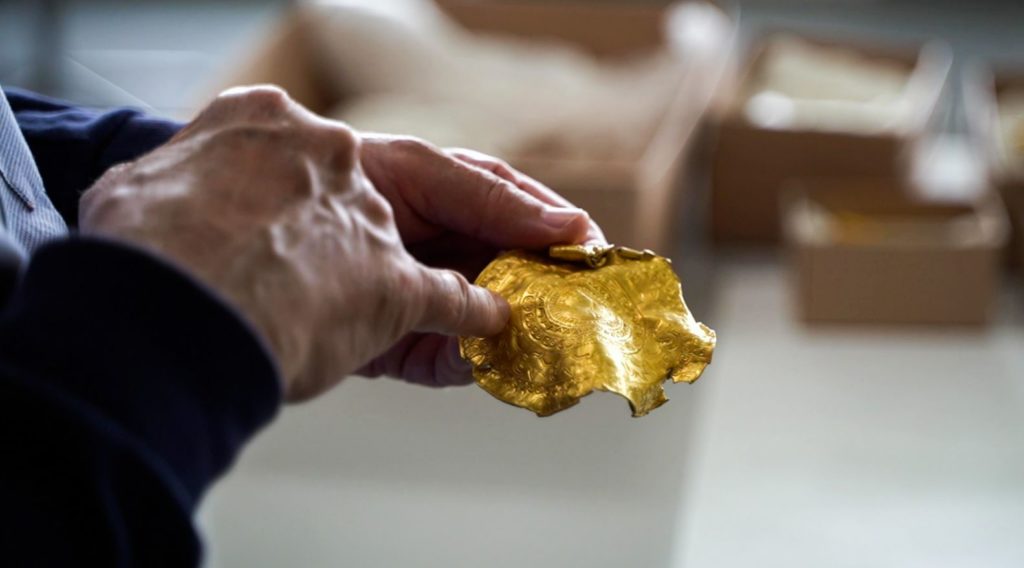
“It really is a unique find. It’s something you don’t see very often, maybe every 50 years,” exclaims Mads Ravn, head of research at the Vejlemuseerne.
Two days before Christmas Eve, Mads Ravn received an SMS from Ole Ginnerup Schytz, who sent a picture of the unique gold find, and asked if it was anything special?
“I replied immediately that: ‘I probably think it is,’ remembers Mads Ravn.
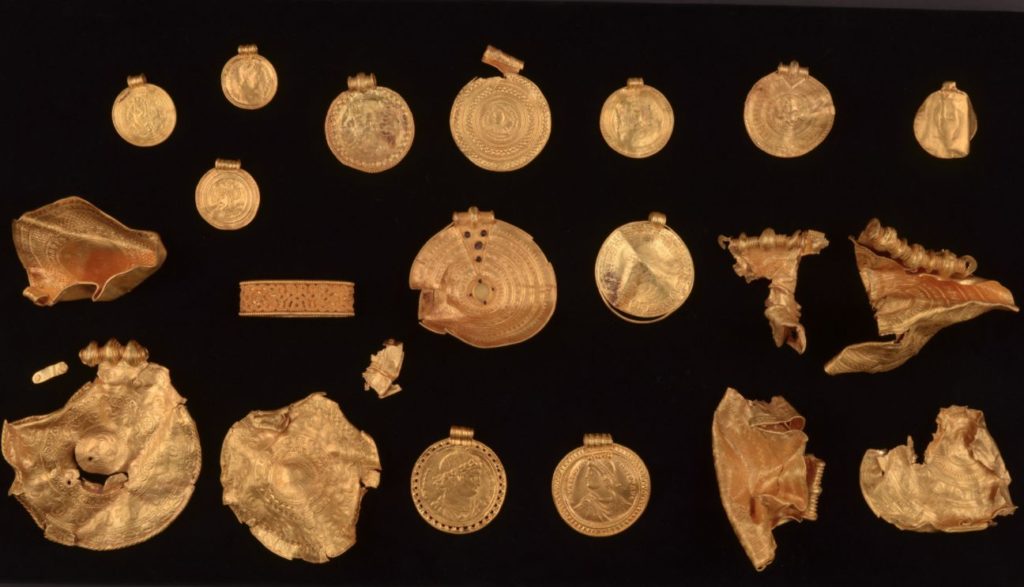
The find was made on a field 8 kilometers from Jelling. So far, the exact location of the find is kept secret so that it is not run over by amateur archaeologists looking for gold.
“There is no more gold,” emphasizes Mads Ravn.
Large medallions are completely unique
The treasure has since been examined and is dated to have been buried in the 500s. Especially the medallions as large as small saucers stand out in the eyes. These are some of the largest found in Denmark.
“The size is spectacular because they are usually the size of a 5 kroner,” says Mads Kähler Holst, who is an adjunct professor of archaeology at Aarhus University and who has not been involved in the gold discovery.
“But the pictorial world and the inscription on them are also really interesting,” he adds.
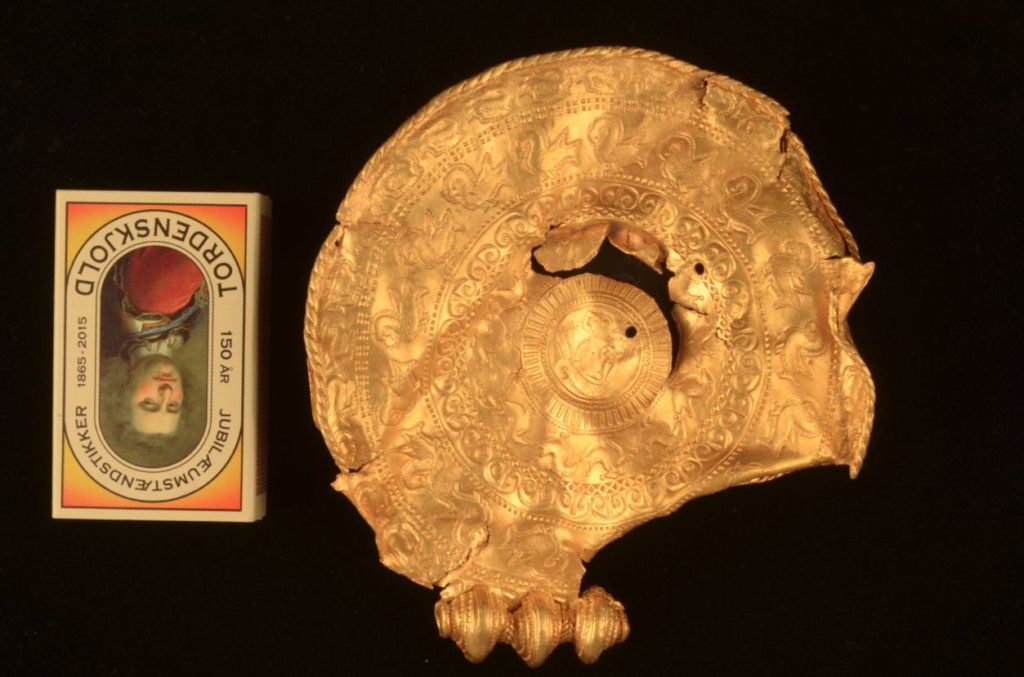
The medallions are decorated and are known as a special type of medallions called bracteate. It was a kind of medallion that was given away to alliance partners, explains Lisbeth Imer, museum inspector and senior researcher at the National Museum.
The medallions are just decorated with runic inscriptions and motifs that possibly refer to the rulers and nobles of the time, which is very common. One of the finds stands out, however, as it brings to mind Nordic mythology.
“It may be a sign that Nordic mythology and the way of thinking in the later Viking Age was more widespread than we already thought around the year 500, which is 300 years before the Viking Age,” adds Mads Ravn.
In addition to the medallions, the treasure also consists of a handful of Roman coins that have been turned into jewelry.
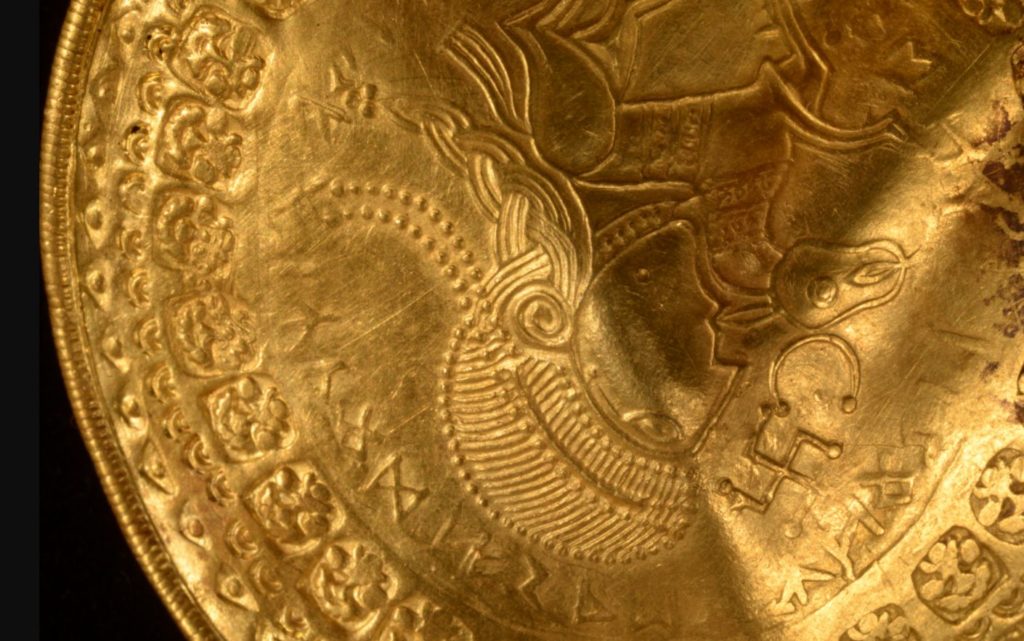
The gold treasure is so valuable that it has no doubt been dug down by a powerful great man or warlord at that time. But scientists do not yet know who the powerful Iron Age persona was.
Jelling is known as a center of power in the Viking Age, which broke through in the 10th century when first Gorm the Old ruled over Jutland, and Harald Bluetooth later raised the Jelling stones and made the Danes ‘Christian’.
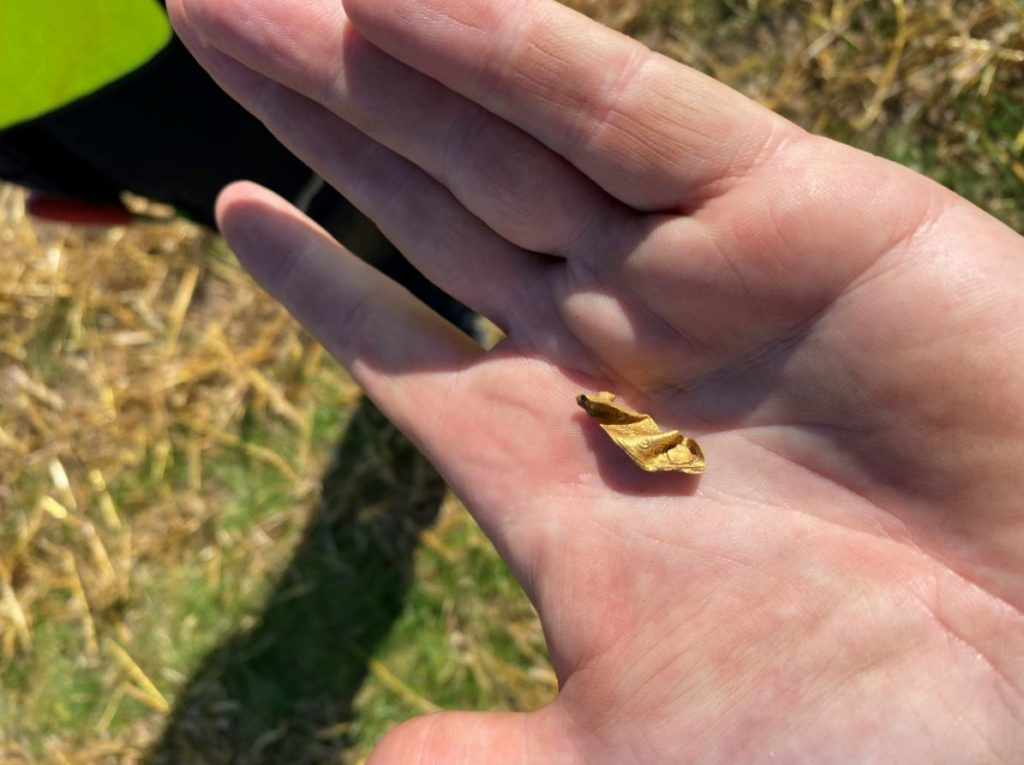
Mads Ravn and his colleagues from the Vejlemuseerne obviously want to dig further in the secret place near Jelling, so they can find out more about who was behind the burial of such a precious treasure.
Image Credit: videnskab.dk
